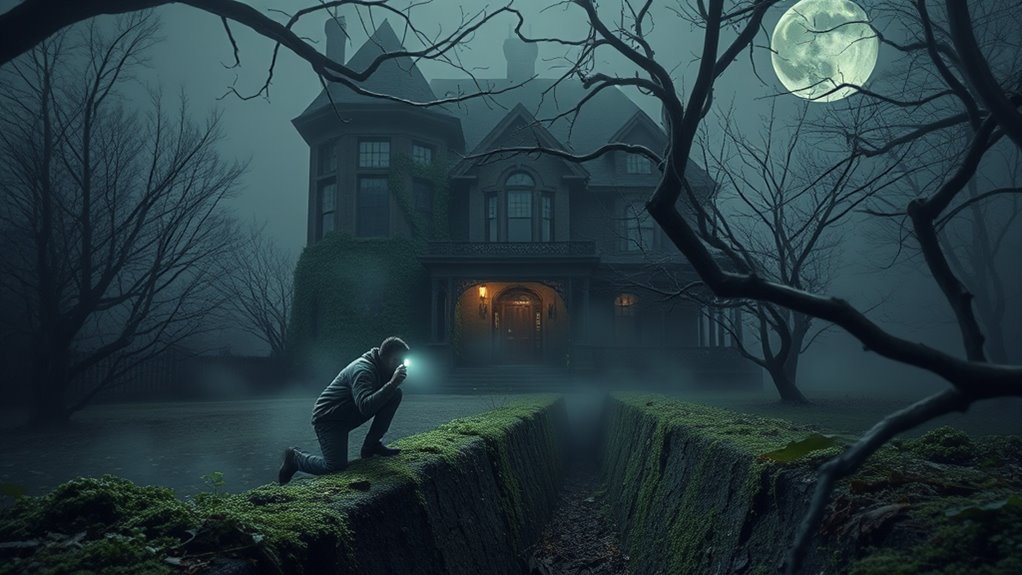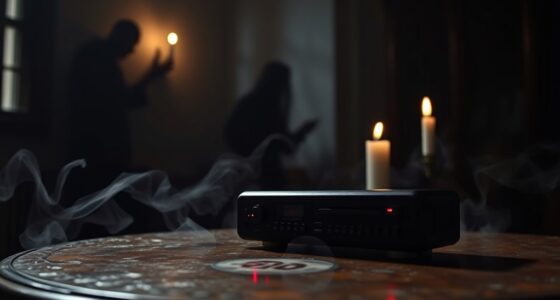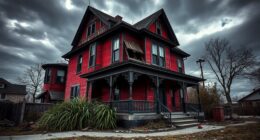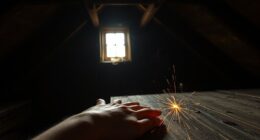To research haunted locations, start by examining old maps, property records, and photographs to uncover their history. Talk to locals and witnesses to gather personal stories and legends. Use online databases and paranormal forums to find patterns and verify sightings. Visit the site to observe any unusual activity firsthand, and analyze local myths and stories to understand their cultural significance. Continuing with these steps will reveal how to uncover the true history behind haunted places.
Key Takeaways
- Examine historical records, maps, and archives to establish the site’s background and significant events.
- Interview locals and witnesses for firsthand ghost stories and community legends.
- Use online databases and forums to verify sightings and identify pattern trends.
- Visit the location to observe environmental cues and unexplained phenomena firsthand.
- Analyze myths, legends, and folk tales to understand cultural influences on the haunted reputation.
Gathering Historical Records and Archives
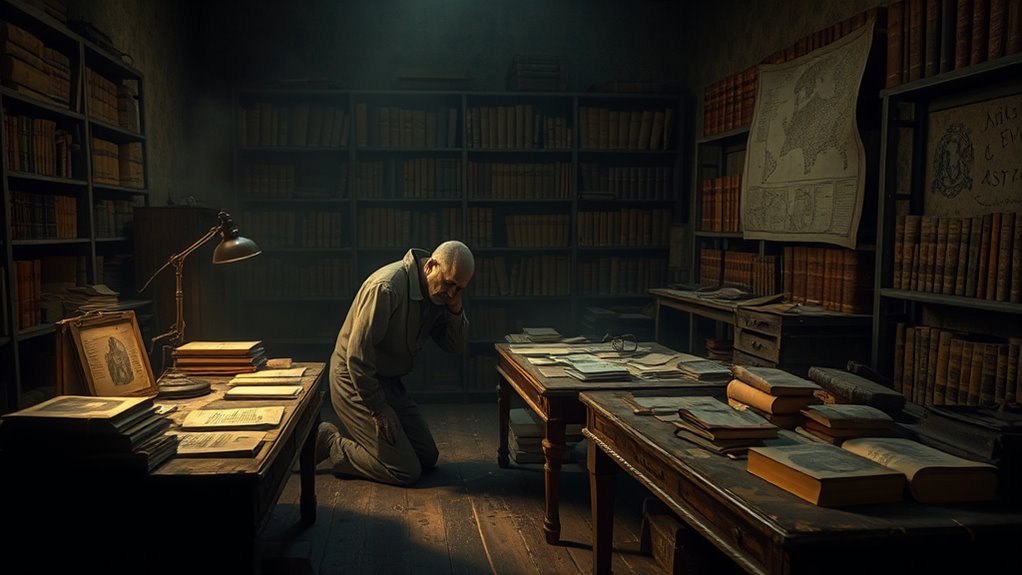
To uncover the history behind haunted locations, you need to plunge into old records and archives. Carefully examining these documents helps guarantee archival preservation and maintains historical accuracy. Visit local libraries, historical societies, and online databases to find maps, property records, old newspapers, and photographs. These sources reveal essential details about a location’s past, ownership changes, and significant events. Take notes and cross-reference information to verify facts and create a clear timeline. Preserving the integrity of original documents is indispensable, so handle fragile materials with care. By diligently researching these records, you build a solid foundation of factual history that can explain why a place might be haunted, making your investigation more credible and insightful. Additionally, understanding the historical significance of a site can provide clues as to why it may be haunted. Conducting thorough document analysis can uncover subtle details that might otherwise be missed. Incorporating archival records into your research ensures a comprehensive understanding of the location’s background, including original ownership, notable events, and the cultural context that shaped its history.
Interviewing Locals and Witnesses

Interviewing locals and witnesses is a crucial step in understanding the stories and experiences connected to haunted locations. These firsthand accounts often reveal ghost stories and local legends that may not be documented elsewhere. When talking to residents, ask open-ended questions about their experiences and listen carefully to their descriptions. Be respectful and patient, as memories can be influenced by personal beliefs or folklore. Witnesses might share encounters with apparitions, unexplained noises, or strange feelings, adding depth to your research. Keep detailed notes and record conversations when possible. Remember, locals’ stories can vary, but collectively, they help you piece together the history and atmosphere of the haunted site. Their insights are invaluable for building an authentic picture of the location’s haunted reputation. Additionally, understanding the community’s background can provide context that enriches your investigation. Exploring the local spiritual energy and beliefs may shed light on the experiences shared, offering a broader perspective on the phenomena reported. Consulting with local history experts can also uncover additional details that deepen your understanding of the site’s haunted reputation.
Utilizing Digital Resources and Online Databases

Digital resources and online databases are invaluable tools for researching haunted locations, offering access to a wealth of historical records, ghost sightings, and paranormal reports. By exploring archives and paranormal forums, you can uncover accounts of ghostly apparitions and spectral evidence that might not be documented elsewhere. Many databases compile witness testimonies, historic photos, and old newspapers that reveal the haunted history of a site. Using keyword searches, you can identify patterns or recurring reports of paranormal activity. These resources help you build a thorough background before visiting a location, increasing your understanding of its haunted reputation. Leveraging digital tools allows you to verify sightings, connect with other researchers, and gather credible evidence for your investigation. Additionally, understanding the origins and history of a name or location can provide valuable context for paranormal phenomena associated with it. Consulting historical records can further deepen your knowledge and uncover overlooked details that contribute to a location’s haunted narrative. Exploring paranormal reports and documented sightings enhances your ability to distinguish genuine activity from myths or misconceptions. Incorporating air quality monitoring data can also reveal environmental factors that might influence paranormal experiences, making your research more comprehensive. Embracing a methodical approach can make your research more effective and insightful.
Visiting the Site for Firsthand Observation
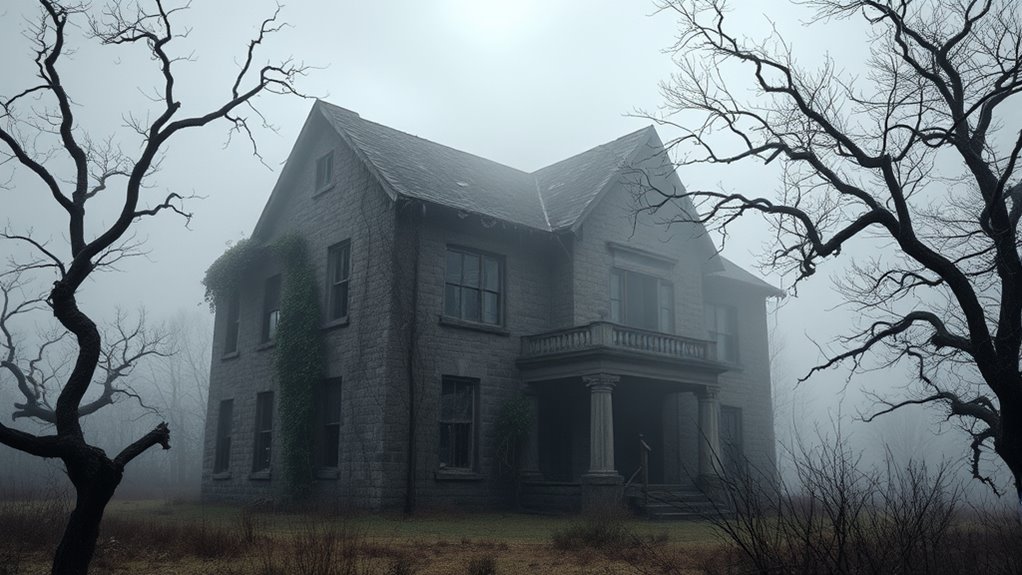
Have you ever wondered what it’s like to experience a haunted location firsthand? Visiting the site allows you to immerse yourself in the environment where ghostly encounters and paranormal activity are said to occur. As you explore, pay close attention to unusual sounds, cold spots, or unexplained movements—these are often signs of activity. Trust your instincts and document anything out of the ordinary. Incorporating mindful observation can help you recognize subtle cues that might otherwise be overlooked. Remember, your presence might even trigger new phenomena or shed light on existing legends. Be respectful of the site and its history, as genuine experiences often come from observing with an open mind. Firsthand observation offers a unique perspective that can deepen your understanding of the location’s haunted reputation. Additionally, being aware of paranormal activity signs can help you identify potential phenomena more accurately. Engaging in a mindful approach can also enhance your ability to notice subtle environmental cues that might otherwise go unnoticed.
Analyzing Legends, Myths, and Folk Tales
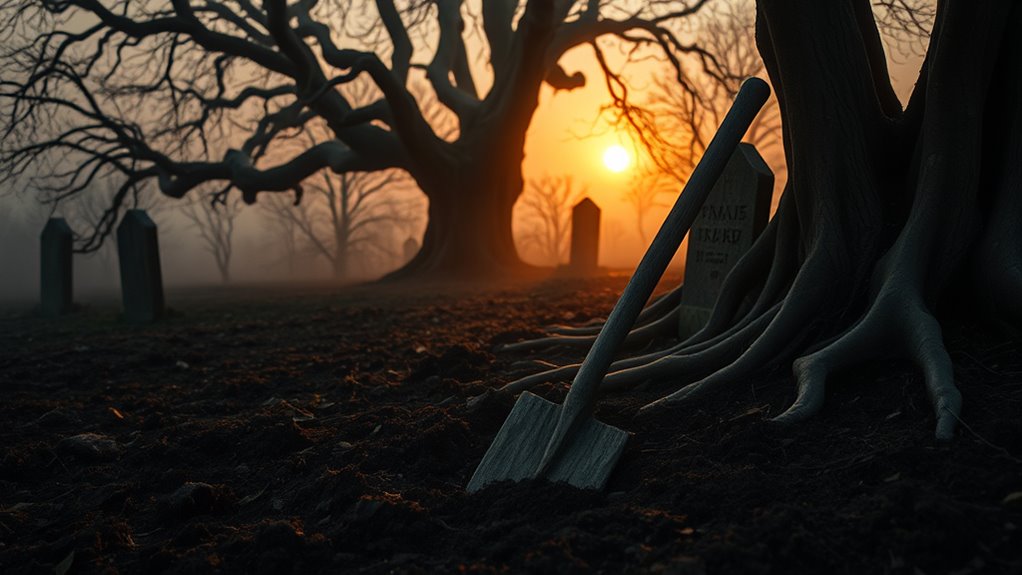
What stories have been passed down about this haunted location, and how do they shape its reputation? Urban legends, ghost stories, and folk tales often form the backbone of a site’s haunting reputation. These narratives, whether based on actual events or exaggerated over time, influence perceptions of paranormal activity. When you analyze these legends, consider their origins and how they’ve evolved through retellings. Are they rooted in local history or purely fictional? Pay attention to common themes and recurring characters, as these can reveal cultural fears or beliefs. Recognizing the difference between fact and fiction helps you understand why people feel drawn to or wary of a place. Ultimately, these stories, whether true or not, shape the haunted location’s identity and mystique.
Frequently Asked Questions
How Can I Verify the Authenticity of Haunted Location Stories?
To verify haunted location stories, you should start by examining historical records for documented events or legends associated with the site. Additionally, seek out eyewitness testimonies, but always cross-check these accounts for consistency and credibility. Be cautious of embellishments or folklore that may have evolved over time. Combining verified historical data with multiple, reliable eyewitness accounts gives you a better chance of determining the story’s authenticity.
What Safety Precautions Should I Take During Nighttime Investigations?
Imagine stepping into a shadowed domain where unseen dangers lurk. To stay safe during nighttime investigations, always wear protective gear like flashlights, gloves, and sturdy shoes. Keep your emergency contacts close, like a lifeline in darkness. Never explore alone—partner up. Trust your instincts, stay aware, and have a plan for quick exits. These precautions help guarantee your adventure remains thrilling, not perilous, as you uncover secrets hidden in the night.
Are There Legal Restrictions on Exploring Certain Historical Sites?
You should always check property ownership and trespassing laws before exploring certain sites. Many historical locations are privately owned, and entering without permission can lead to legal trouble. Always seek consent from property owners or authorities, and respect posted signs and restrictions. Familiarizing yourself with local trespassing laws helps you avoid fines or arrest, ensuring your investigation stays safe and legal. Being responsible keeps your exploration enjoyable and trouble-free.
How Do I Differentiate Between Natural and Supernatural Occurrences?
To tell natural from supernatural occurrences, you need to be aware of psychological biases and environmental factors. Your mind may interpret strange events as supernatural due to biases like pareidolia or confirmation bias. Consider environmental influences like drafts, sounds, or light changes that can create illusions. Stay skeptical, investigate thoroughly, and document your experiences objectively. If phenomena persist beyond logical explanations, then you might explore supernatural possibilities, but always rule out natural causes first.
Can Personal Beliefs Influence the Interpretation of Paranormal Evidence?
Your personal beliefs can definitely influence how you interpret paranormal evidence. Subjectivity bias plays a role, making you see what aligns with your views, while cultural influence shapes your perception of supernatural events. If you’re open to believing, you might interpret ambiguous phenomena as paranormal. Conversely, skepticism can lead you to dismiss similar evidence. Recognizing these biases helps you better understand your reactions and stay objective when examining haunted locations.
Conclusion
As you explore haunted locations, remember that over 60% of reported sightings are linked to local legends and personal experiences. Combining historical records, interviews, and firsthand visits, you gain a deeper understanding of these mysterious sites. Your research not only uncovers their past but also brings to light the stories that continue to thrill and intrigue. Embrace the process—each discovery adds a new layer to the haunting history waiting to be uncovered.
